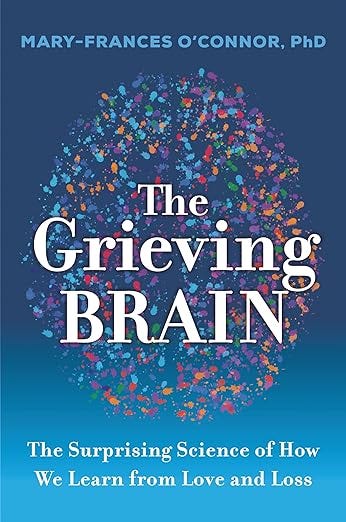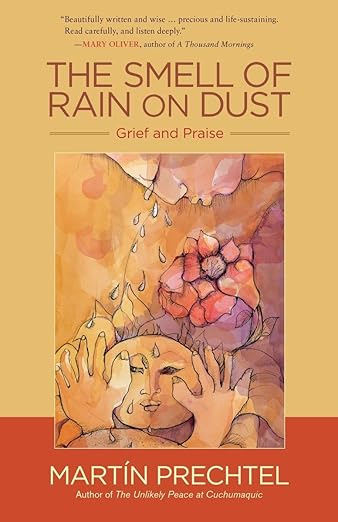The Unspoken Reality of Grief: Two Books to Guide You Through
Find Comfort and Clarity in Times of Sorrow
These two compelling books have been essential in finding comfort and clarity as I navigate my own sorrow of losing many close relationships in a short period. They have and still do offered solace in the grief process and illuminated diverse perspectives on how to cope with the overwhelming absence of those deep connections. The first book presents a Western neuroscience viewpoint that illuminates the underlying mechanisms of grief, while the second examines the traditions of the Maya and reveals the essential role of community support in healing. Together, I hope they can offer you roadmap for understanding the complexity and long journey of navigating grief.
The Grieving Brain: The Surprising Science of How We Learn from Love and Loss
by Mary-Frances O’Connor
This book was essential for deepening my understanding of the grief process and removing the confusion around my own grief experience. It provided a framework for understanding the brain and why it is so difficult to move through grief, how to avoid ruminating on the death, and how to live with the loss. Knowing that grief is a neurological response normalized the intense emotions and reduced the feeling of complete helplessness I felt in the face of such overwhelming loss. In essence, if you enjoy having clarity around the grieving process, this book can help you make sense of your emotional journey, understand where you might get “stuck,” and learn how to move through the journey with your eyes wide open.
The Smell of Rain on Dust: Grief and Praise
by Martín Prechtel
Martín Prechtel shares the Tzutujil Mayan traditions for dealing with grief, passed down over hundreds of years. I loved this book for its unique perspective on grief as a communal responsibility, the guidance on how to best support those in mourning, and the warning about the dangers of not providing space for grief to be fully processed.
The one takeaway I carry with me from this book is the idea of having a Designated Non-Griever—a person who is there to support the grieving process.
A designated Non-Griever is someone who will not try to cure you; grief is not an illness. It is someone who will assist you in only the most tangible ways: helping with sleeping, eating, staying warm/cool, keeping you safe, and listening without getting caught up in the meaning of your words. They will keep your experience private and will not try to make you feel better or cure your pain.
Grieve by the sea in complete privacy, where you will not be disturbed or judged (except by your designated Non-Griever), allowing yourself to completely let go and grieve as loudly and as intensely as you need—let the ocean take the grief.
Conclusion:
These two books offered me different perspectives on the grief process, giving me a broader and well-rounded understanding of how to move through the often confusing and unknown journey of grief and how to best support myself and those around me in grief. These two books provide hope in the face of overwhelming loss and offer practical ways to live in a world full of changing relationships.




